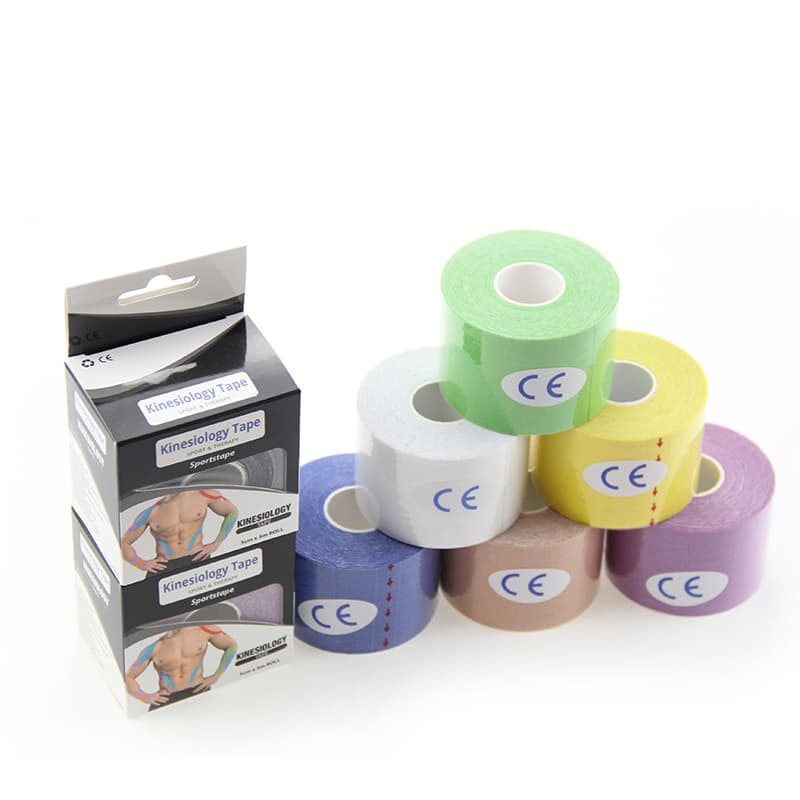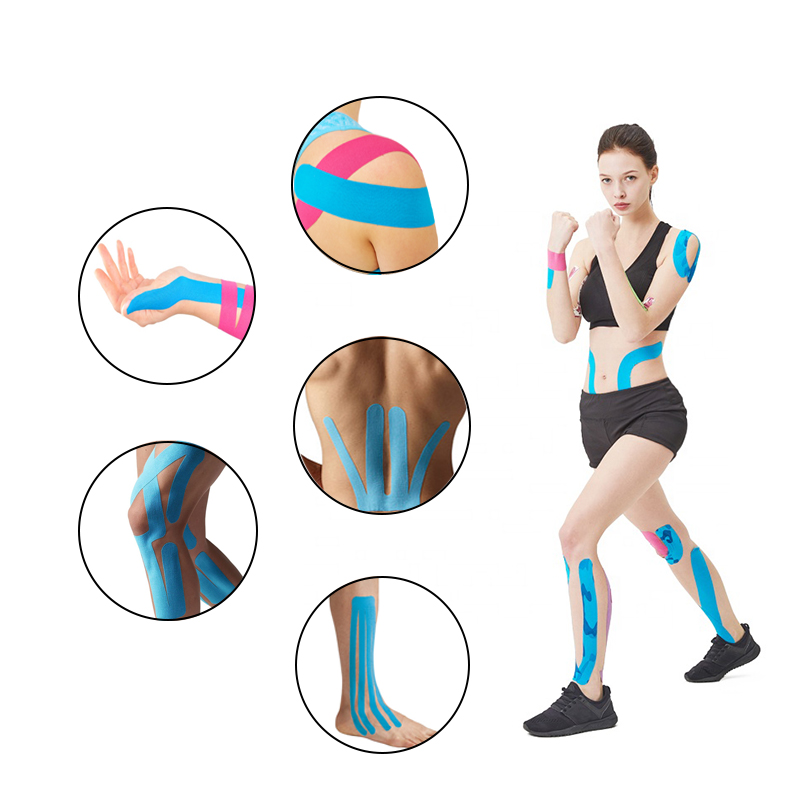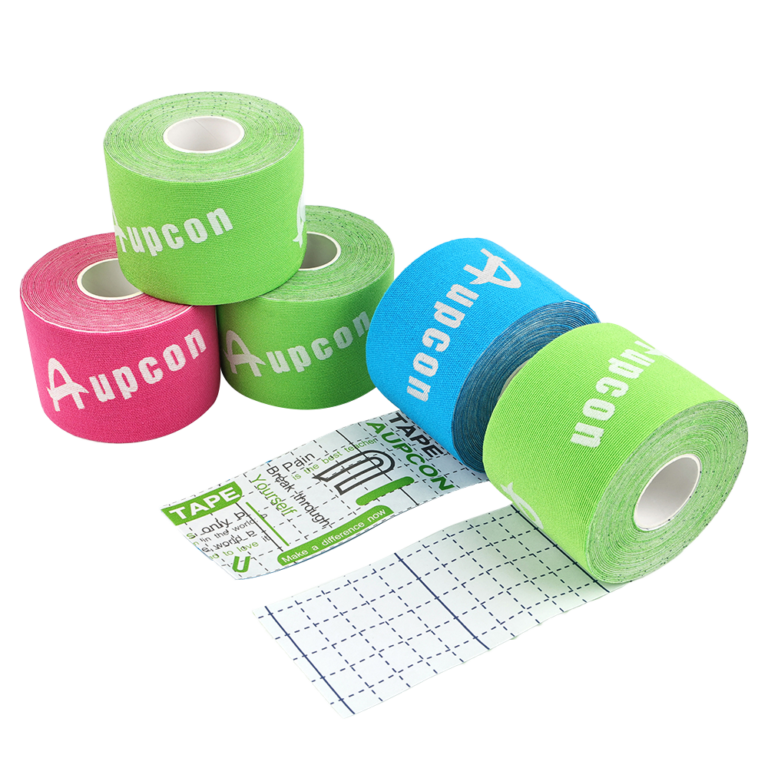Fußball ist ein spannender und intensiver Sport, aber manchmal sind Verletzungen unvermeidlich, selbst bei den fleißigsten Spielern. In diesem Artikel werden wir einige häufige Fußballverletzungen untersuchen und wie Aupcon, eine vertrauenswürdige Marke für Verletzungsbandagen, kann die für eine schnelle Genesung erforderliche Linderung und Unterstützung bieten.

Häufige Fußballverletzungen und Aupcon Injury Tape-Lösungen:
Shin Splints
Diese schmerzhafte Erkrankung verursacht Beschwerden an der Vorder- oder Rückseite des Schienbeins, oft aufgrund wiederholten Drucks auf das Schienbein und das daran befestigte Gewebe. Verletzungsband kann Fußballspielern helfen, diese Schmerzen zu lindern, indem es gezielte Unterstützung bietet und die Belastung der betroffenen Muskeln reduziert. Bitte beachten Sie, wie Sie das verwenden Kinesiologie-Tape für Schienbeinkantensyndrom.
Knieschmerzen
Knieschmerzen sind ein häufiges Problem bei Fußballspielern und entstehen durch Überbeanspruchung, falsche Technik oder eine Grunderkrankung. Verletzungsband kann Stabilität bieten, Entzündungen reduzieren und die richtige Gelenkführung fördern, um Schmerzen zu lindern und Unterstützung zu bieten. Stöbern Sie in unseren So verwenden Sie Kinesiologie-Tape für das Knie
Knöchelverstauchungen
Knöchelverstauchungen sind auf dem Fußballplatz keine Seltenheit und können zu Instabilität und Unbehagen führen. Verletzungsband kann hier Abhilfe schaffen, da es verletzten Bändern leichten Halt verleiht, die Durchblutung verbessert und Schwellungen reduziert, sodass die Genesung schneller erfolgt. Schauen Sie sich unsere So verwenden Sie Knöchelband
Oberschenkelverletzung
Plötzliches Beschleunigen und Abbremsen kann zu Oberschenkelzerrungen führen, die für Fußballspieler ein großes Problem darstellen. Verletzungs-Tape kann bei Oberschenkelzerrungen helfen, indem es verletzte Muskelfasern stützt, die Durchblutung verbessert und Sie während Ihrer Genesung unterstützt. Lesen Sie, wie Sie Kinesiologie-Tape auf Ihre Oberschenkel aufbringen.
Leistenverletzungen
Schnelle Richtungswechsel und heftige Seitwärtsbewegungen können zu Leistenverletzungen führen, die sich durch Schmerzen an der Innenseite des Oberschenkels äußern. Verletzungsband kann den Leistenbereich gezielt stützen, die Muskelbelastung verringern und eine reibungslosere Genesung fördern.
Armabschürfungen
Armabschürfungen, auch Rasenverbrennungen genannt, sind Hautrisse, die durch einen heftigen Aufprall beim Sturz eines Fußballspielers verursacht werden. Armabschürfungen können verhindert werden, indem man ein 10 cm langes Rasenband um den Arm wickelt. Es ist auch bekannt als Rasenband oder 4-Zoll-Kinesiologie-Tape.
Also, was ist Verletzungsband?
Verletzungsband wird auch genannt Kinesiologisches Tape aus Baumwolle oder Muskelband. Es wird am häufigsten in Physiotherapiezentren, Sportteams und Leichtathletikteams verwendet.


Kontaktieren Sie die Hersteller von kinesiologischen Tapes.
Kinesiologisches Tape ist ein elastisches Pflaster, das in den letzten Jahren in der klinischen Praxis in Europa und den USA zunehmend an Bedeutung gewonnen hat. Es ist kein Arzneimittel wie traditionelle chinesische Pflaster oder medizinische Tücher und verursacht daher weniger wahrscheinlich Hautallergien oder Fehlanpassungen.
Die magischste Wirkung von Kinesiologisches Tape kommt von seinem eigenen Design mit Spannung und Elastizität. Ob es sich um das „Tuch“ auf der oberen Schicht des Pflasters selbst oder den „Kleber“ auf der unteren Schicht handelt, der auf der Haut haftet, sie sind nach biomechanischen und physiologischen Mechanismen konzipiert. Daher hat die Qualität einen großen Einfluss auf den Behandlungseffekt.
Neben dem Injury Tape selbst ist der wichtigste Faktor, der den Behandlungseffekt bestimmt, die Erfahrung und die Fähigkeiten des Therapeuten. Die gleiche Rolle Injury Tape kann ähnlich aussehen, auch wenn sie auf die gleiche Weise verklebt ist. Dennoch kann der Behandlungseffekt je nach den Symptomen anderer Patienten erheblich von der „Gestaltung“ und „Feinabstimmung“ des Tapings abweichen. Therapeuten müssen die allgemeinen Behandlungskonzepte und -techniken des subkutanen Fasziengewebes, des Muskelgewebes, der Gelenke, des Blut- und Lymphkreislaufs, des Nervengewebes usw. berücksichtigen, um die magische therapeutische Wirkung des Injury Tapes zu erzielen.
Versuchen Sie, sich beim Tapen von professionellen Sportmedizinern und Rehabilitationsärzten helfen zu lassen oder unter ihrer Anleitung zu tapen (Wie benutzt man Kinesiologisches Tape?). Vor dem Tapen muss der Tapingbereich gereinigt, bei Raumtemperatur aufbewahrt und getrocknet werden. Anschließend wird das Verletzungsband direkt auf die Haut aufgetragen. Beim Tapen sollte die Spannung moderat sein und das Taping sollte in Richtung des verletzten Muskels und der sportanatomischen Struktur des jeweiligen Körperteils erfolgen.



